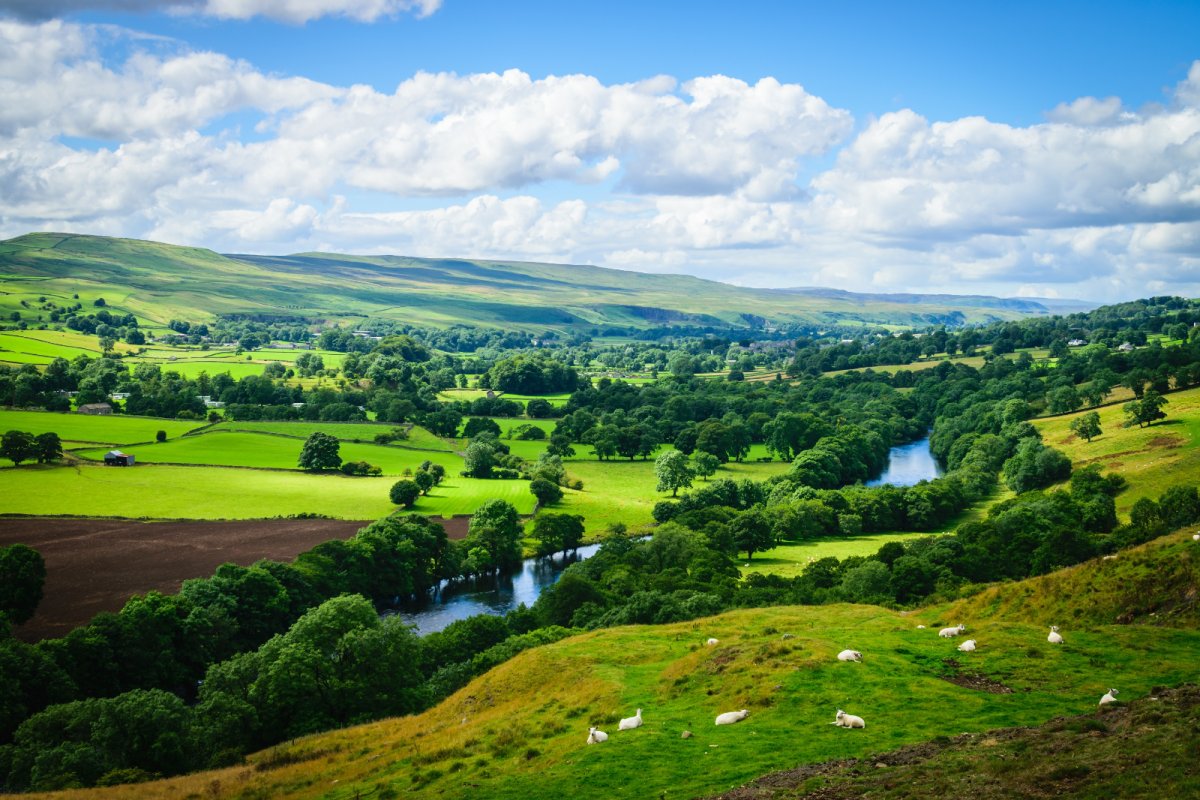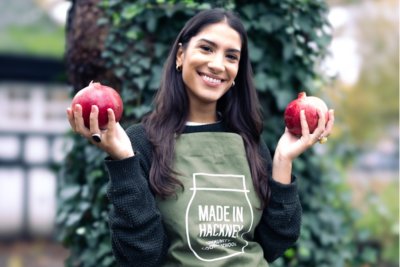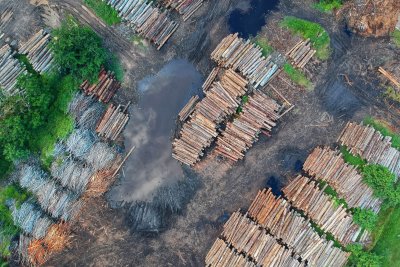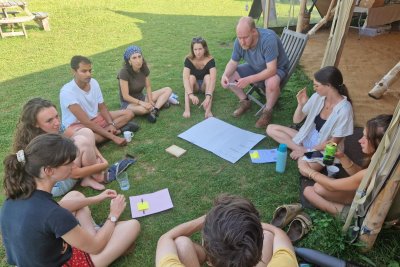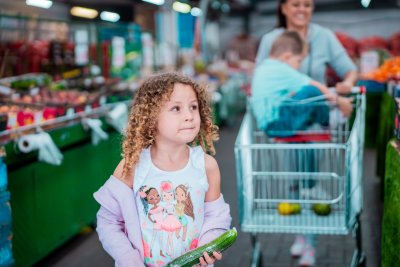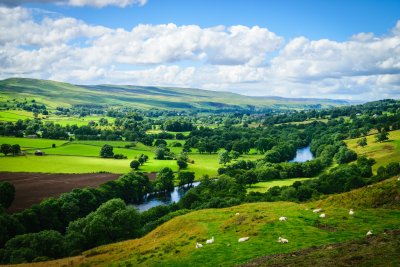 Meandering river making its way through rural farmland. Copyright: Nuttawut Uttamaharad | shutterstock
Meandering river making its way through rural farmland. Copyright: Nuttawut Uttamaharad | shutterstock
How do factory farms harm our rivers? Your questions answered
Welcome to Sustain's campaign to Save our Rivers. We hope this Q&A helps you understand our mission a bit better. To hear more and stay up to date with this and our other work, join our mailing list.
Q. What are we aiming to do?
We need good planning policy for food and farming now. Industrial livestock ‘megafarms’ are on the rise in the UK. They are polluting our rivers and air, accelerating climate change, contributing to overseas deforestation to produce feed, causing nuisance and harming other rural businesses. Despite this, many councils don't currently have the tools in place to stop factory farms applications in their tracks.
At Sustain, the alliance for better food and farming, we are helping councils to use their planning powers to stop the spread of factory farms in their area. By joining the campaign, we will support councils to adopt planning policies that ensure applications for livestock megafarms are properly scrutinised and their impacts fully disclosed.
We think planning policy is one of the best levers to halt the spread of factory farming. By engaging with your council, you have the power to help drive this change.
Q. I thought sewage and water companies were to blame for polluting our rivers?
Our rivers are polluted for a range of reasons, including chemicals, plastics and bacteria, and the most influential factor will vary geographically. However, across England ‘Agriculture and rural land management’ is the most common reason for water bodies not reaching ‘Good Ecological Status’.
In fact, phosphate – which is present in animal manure and fertilisers - accounts for more water bodies failing to achieve good ecological status than any other water quality pressure. The increased level of phosphate pollution in our water has clear ties to industrialised forms of animal agriculture.
For example, chicken manure has particularly high concentrations of phosphates. When we look at the River Wye – along which up to 20 million chickens are fattened in intensive units at any one time – phosphate pollution is a major cause of its ecological decline. Environment Agency modelling gives the following sources of phosphate load:
• Upper Wye sub-catchment: 66% agriculture, 25% sewage, 9% other;
• River Lugg sub-catchment: 66% agriculture, 25% sewage, 9% other; and
• Lower Wye sub-catchment: 61% agriculture, 33% sewage, 6% other.
Q. How do factory farms pollute our rivers?
Industrialised livestock farming is on the rise in the UK. We now have well over 1000 US-style chicken, pig and dairy ‘megafarms’, each housing tens of thousands of animals in confinement at any time.
These units produce an overwhelming amount of waste – more than 50,000 tonnes per day (or over 100 double-decker busloads every single hour!). This contains harmful pollutants such as nitrates, phosphates, and antibiotic-resistant bacteria. The most common method of slurry disposal is spreading (normally untreated) on nearby fields. Unfortunately, our soils are so saturated with nitrates and phosphates that pollutants run off fields into rivers after spreading. As there is little on-site monitoring of farms, slurry also leaks directly into rivers from units or faulty slurry storage.
Where on-site monitoring of animal farms by Environment Agency officers has occurred, numerous violations of slurry storage regulations have been uncovered. For example, in Devon, 90% of farms visited by an Environment Agency officer were violating slurry storage regulations. Of these violations, 2/3s created river pollution. Violations occurred at farms that were certified Red Tractor farms and, as such, should have been adhering to higher production standards.
Q. Why is animal waste so bad for rivers?
Nutrient pollution is a major problem. Nitrates and phosphates cause algal blooms that suck up the oxygen in the water and block sunlight from reaching the riverbed, killing fish, insects and other wildlife. Pollution is not only having a big impact on wildlife, but on rural economies. Only one inland waterway in the UK is designated safe to swim and dirty rivers are affecting local tourism and housebuilding. In fact, nutrient pollution has become so acute in 42 areas of the UK that councils are unable to approve housing developments that may produce additional pollution.
Q. How does that affect human health?
Slurry pollution is having a big impact on human health. Here are just three of the ways:
1) Antimicrobial resistance bacteria have been found in water downstream of industrial livestock units.
2) Increased levels of respiratory diseases such as asthma, zoonotic diseases, mood disorders including anxiety, depression, and sleep disturbances are attributable to malodorous compounds that emanate from factory farms.
3) Restrictions on open water swimming due to poor water quality is impacting people’s mental health and connection to nature.
Q. Ok, intensive livestock farming is part of the issue, but aren’t pesticides from arable farming causing pollution too?
It is true that intensive forms of agriculture of any kind can produce a surplus of nutrients. Intensive arable agriculture uses a lot of synthetic and organic fertilisers and pesticides which can pollute air and water.
However, as reported by WWF, almost half of all the UK’s arable land area is used to grow food for farmed animals. Wheat grown for animal feed alone is enough to produce 11 billion loaves of bread per year. This is an extremely inefficient use of arable land that could be used to directly feed humans. It also means that factory farms are having an additional impact on rivers through the feed that is grown under intensive conditions to feed animal populations.
Q. Are some types of animal farming worse than others? Should we be eating less beef and more chicken?
The major issue is that the overall quantity of manure being produced is more than the land can absorb, and more than the grassland or crops need to grow. That excess nutrient will reside in the soil and enter watercourses through leaching or soil erosion.
However, when livestock is integrated with farming systems that can fully utilise the waste, in small enough numbers that pollutants don’t leech into rivers, it is more sustainable. Agro-ecological farming systems, that have minimal inputs, prioritise soil health and produce nutritious foods in a nature-friendly way, are the solution. A recent report from the Landworkers Alliance and a collaboration of UK Farming organisations poses a model for UK farming which includes smaller numbers of livestock being fed food waste, noting their role in utilising food that can’t be fed to humans. This would eliminate the need for importing soy.
Q. What do you mean by intensive livestock?
Intensive livestock farming includes any large-scale indoor animal farming operation that uses industrialised processes to restrict animal movement and behaviour. It involves keeping animals in majority indoor environments such as barns, cages and crates or confining them in feedlots. This factory-style ‘intensive’ rearing is cruel, resource-intensive and involves the use of vast acreages of land elsewhere to grow animal feed, much of it produced using chemical pesticides and artificial fertilisers.
Q. Why are the Environment Agency not inspecting this and fining culprits?
Cuts to the Environment Agency mean the waste management practices of industrial agriculture companies receive little or no monitoring. This means that councils have a uniquely important role in stopping the spread of factory farming to save our rivers.
Q. Do Local Authorities need to close intensive livestock farms down?
This campaign is not asking any councils to close factory farms. This campaign is just saying that we don’t need any further expansion of industrial livestock in the UK.
Q. What can councillors do to stop the spread of factory farms?
Councils in the UK have a number of planning-related powers to help protect rivers and stop the spread of factory farming:
- Councils that have planning powers (ie 'planning authorities') create local plans, which set out the overall aims of planning in their area. In these, they can clearly set out the need to protect rivers, reverse biodiversity decline and tackle the climate emergency, to meet local and national policies, within national planning frameworks.
- Planning Authorities can create Supplementary Planning Policy or Guidance that requires a rigorous assessment of the environmental impacts of a new planning application, specific to intensive livestock units. Relevent planning authorities have some discretion over what should be included in an environmental assessment and statement, and whether that information is adequate.
- Councils can create and influence other plans locally to ensure a supportive environment for sustainable planning policy and decisions, for example including sustainable farming and food growing in biodiversity plans, climate emergency plans, nature reccovery strategies and catchment level partnerships
Guides for the four UK nations are available to those registered for planning for the planet.
Q. What are the ‘nutrient neutrality’ rules and how is agriculture stalling housebuilding?
42 places in the UK have been designated as nutrient sensitive zones. These are areas where there is a protected site (e.g., sites of special scientific interest, geological parks, AONBs), and where the protected site is in ‘unfavourable condition due to access nutrients’ – with the main nutrients being nitrogen and phosphorus.
In these places, the planning authority (i.e., the council) has been advised by Natural England that no developments can go ahead if they would cause additional pollution. Since essentially any development adds some kind of pollution, the granting of permission for new houses has been effectively stalled.
It is likely that agriculture is the leading source of the phosphorus and nitrogen pollution in these areas, and therefore a key factor in stopping houses being built, because:
- Agriculture is the main source of river pollution incidents overall.
- Fertilisers and livestock manure are the main source of nitrogen and phosphorus pollution in soils.
- In places where more detailed analysis of the estimated contribution of chemicals to water pollution has been conducted, intensive livestock has been identified as a culprit.
It is estimated that between 145,000 and 160,000 homes have had their construction stalled because of nutrient neutrality issues and excess levels of river pollution. With agriculture being the leading cause of river pollution, intensive farms that input or produce a lot of nutrient pollution may be effectively blocking new homes from being built during a housing crisis.
Q. Can’t slurry just be turned into biogas to make green energy?
Anaerobic Digestion (AD) is the process of taking organic materials, known as ‘feedstocks’, both purpose-grown, like maize and other crops, and waste streams, like food waste and manure, and breaking them down using micro-organisms in the absence of air. This produces methane-rich biogas, which can be used to generate heat or electricity, and nutrient-rich digestate, which can be used as a fertiliser.
However, AD is mainly about reducing GHG emissions. It doesn’t solve the nutrient pollution issue, because nutrients remain in the digestate, which must be disposed of. As UK soil is already oversaturated, spreading this waste on the land is not an ecologically sound option.
Whilst AD offers GHG emissions reductions compared with open slurry storage, these GHG reductions are much smaller than would be achieved through dietary change, because slurry is only a small part of the emissions from meat. Feed and endogenic emissions (farting!) are a much greater factor.
This Feedback report outlines more evidence of how the benefits of AD have been overstated. Worse, the industry’s ambitions may be crowding out better environmental alternatives and encouraging the growth of factory farming to feed the capacity of anaerobic digestion facilities.
Q. How did you come up with 100 busloads of poo every single hour?
To estimate excreta per day per farmed animal, we calculated an average figure for excreta per day over an animal's lifetime. To produce regional excreta figures, we multiplied average excreta per day per farmed animal with regional factory farm population data drawn from Compassion in World Farming data from 2017. To produce national excreta figures, we estimated national factory farm livestock populations from UK-wide livestock data and then multiplied this with average excreta per day per farmed animal.
Livestock excreta numbers were taken from government data, and UK-wide livestock figures were drawn from recent government estimates. Regional livestock figures were drawn from a 2017 survey pulled together by Compassion in World Farming and data on soil nutrient balances were from government data.
Still scratching your head? Feel free to contact us – info@foodfortheplanet.org.uk
Food for the Planet: Food for the Planet is helping local authorities, businesses and organisations take simple actions to tackle the climate and nature emergency through food.
Sustain
The Green House
244-254 Cambridge Heath Road
London E2 9DA
020 3559 6777
sustain@sustainweb.org
Sustain advocates food and agriculture policies and practices that enhance the health and welfare of people and animals, improve the working and living environment, promote equity and enrich society and culture.
© Sustain 2024
Registered charity (no. 1018643)
Data privacy & cookies
